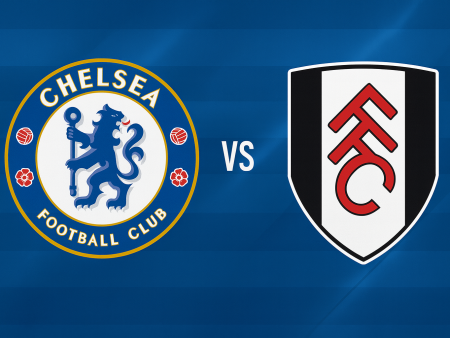The Importance of Playing Out from the Back in Modern Football
Playing out from the back has become a foundational element in contemporary soccer strategy, particularly after recent rule changes that allow defenders to receive the ball inside their own penalty area during goal kicks. Rather than resorting to long clearances that often result in a 50/50 possession battle, teams are increasingly favoring short, controlled passing sequences starting from deep in their own half. This method not only helps maintain possession but also provides valuable technical and tactical development opportunities for players at all youth levels. The following guide presents a complete training session for U11-U15 players, focusing on the concepts and techniques required to confidently build play from the back.
Planning and Structure for an Effective Training Session
When preparing a session on playing out from the back, it is essential to situate exercises in the areas of the pitch where these scenarios most naturally occur-primarily the defensive half. Defenders, midfielders, and goalkeepers are the core participants, with forwards from the opposing team providing realistic pressing resistance. This approach simulates actual match conditions better than isolated drills and helps all involved players understand their roles and decision-making within this tactical context.
Warm-Up: Positional Rondo for Building from the Back (7v5)
This initial activity introduces players to possession play under pressure and sets the stage for more complex building-from-the-back exercises.
Set-Up:
- 12 players
- 1 ball
- 5 bibs
- 12 cones
- 30x30 yard playing area
To imitate real match structures, the group is divided unevenly: one side (typically the defenders and midfielders) has a 7v5 advantage over the pressing attackers. Arrange defenders into a back four, supported by two central midfielders and a goalkeeper. The attacking team takes positions suitable for applying immediate pressure. Mark out two zones separated by a line at the halfway point of the grid.
The formation encourages width from fullbacks, with a defensive midfielder dropping deep to create a passing diamond-often referred to as "La Salida Lavolpiana," a popular tactic that maximizes passing options and numerical superiority. The ability of players to break lines and move in between these zones is integral to success.
Rules:
- All play restarts from the goalkeeper.
- Possession is the main objective for both sides; attackers aim to disrupt and recover, defenders strive to unbalance the press.
- Only defensive midfielders may move between zones, maintaining equilibrium in movement.
Key Coaching Points:
- Well-timed runs, especially from midfielders adjusting to the ball’s movement.
- Emphasis on quick, short passes and constant scanning.
- Use width but be prepared to shift into narrower shapes when defending.
- Avoid forcing play into crowded or pressured zones; use the goalkeeper or pivot to switch sides and relieve pressure.
- Encourage continuous positional interchange and speed variation.
- Every player should always have safe, simple options backward or sideways.
Progression:
Add small target goals for the defending team to score after breaking out, giving attackers greater incentive to press and creating game-like transitions.
Analytical Activity: Techniques for Playing Out from the Back
This exercise allows for a closer, coach-led exploration of specific patterns for building from the back.
Set-Up:
- 13 players
- 1 ball
- 5 bibs
- 44x50 yard area
Arrange the teams to provide the attacking side a numerical advantage (7v5 or 8v5), depending on your group. One team builds from the back toward a target player or through crossing the halfway line; the other side applies pressing pressure and looks to score on a goal.
Pattern Options for Coaches to Train:
- Inverted fullbacks (moving centrally)
- Inverted wingers (dropping toward the midfield as fullbacks advance)
- Central midfield linkage: focusing on movement and timing in buildup
- Triangular combinations and supporting movement
- Positional rotations (e.g., central midfielders covering for advanced fullbacks)
- Creation and exploitation of overloads, then switching play to weak areas
- Penetrating passes between the lines
Select two or three patterns appropriate for your group to emphasize during the session, gradually layering complexity as players progress.
Focusing on Switching Play
Teams may often face high-pressure situations where forward options are blocked. Players must then utilize the full width of the field, leveraging the goalkeeper as an outlet to quickly switch the point of attack. The opposite fullback and center back should maintain their width, creating passing lanes to escape pressure and attack less protected areas on the far side.
Introducing Positional Rotation
Positional interchanging further disorients opponents. Encourage defenders, midfielders, and attacking players to rotate roles, drawing out markers and opening spaces in the attacking half. The key is to synchronize movements to avoid crowding and ensure every zone remains covered defensively.
Key Coaching Points:
- Run timing and spatial awareness for all players.
- Retain quick ball circulation while maintaining width and shape.
- Switch play through safe outlets under pressure.
- Utilize positional rotation to destabilize marking assignments.
- Provide players with options in every direction-forward, backward, and sideways.
- Identify and exploit spaces between opposition lines.
Small-Sided Game: Implementing Build-up Concepts (6v6)
Apply the principles learned in the warm-up and analytical segments within a competitive 6v6 game.
Set-Up:
- 12 players
- 1 ball
- 6 bibs
- 44x50 yard pitch
Each team should adopt a shape such as 2-1-2, mirroring real-game defensive organization. All restarts begin with the goalkeeper to reinforce playing out themes. Teams design and implement their own building sequences, drawing on previous drills-be it positional rotation, switching the point of attack, or using give-and-go patterns.
This phase encourages player autonomy. The coach allows teams to solve build-up problems creatively, only intervening to reinforce essential coaching points or to facilitate discussion.
Additional Coaching Focus:
- Pass accuracy and tempo, avoiding passes that invite intercepts.
- Movement and scanning to deceive opponents and exploit gaps.
- Support positioning-players ahead of the ball must look to receive behind defensive lines.
- Keeping a body position open to play forward fluidly.
- Continuously offer outlets in all directions around the ball.
- Use combination play, including give-and-go moves, to break pressing structures.
- Decision-making on when to circulate possession versus when to attempt penetrating passes.
For larger groups, expand to a full-sided game while maintaining the emphasis on structured build-up and key concepts from earlier in the session.
Summary: Empowering Players to Build from the Back
A well-designed session on playing out from the back equips players with vital skills to maintain possession under pressure, make intelligent decisions, and work collaboratively from deep areas of the field. By progressively layering technical exercises, situational drills, and open play, coaches foster both individual growth and collective understanding. Encouraging players to devise and implement their own tactics not only deepens learning but also cultivates confidence and independence for match situations.
Explore further resources on session planning, pressing strategies, and additional build-up patterns to enhance your training programs and keep your team evolving on the pitch.













